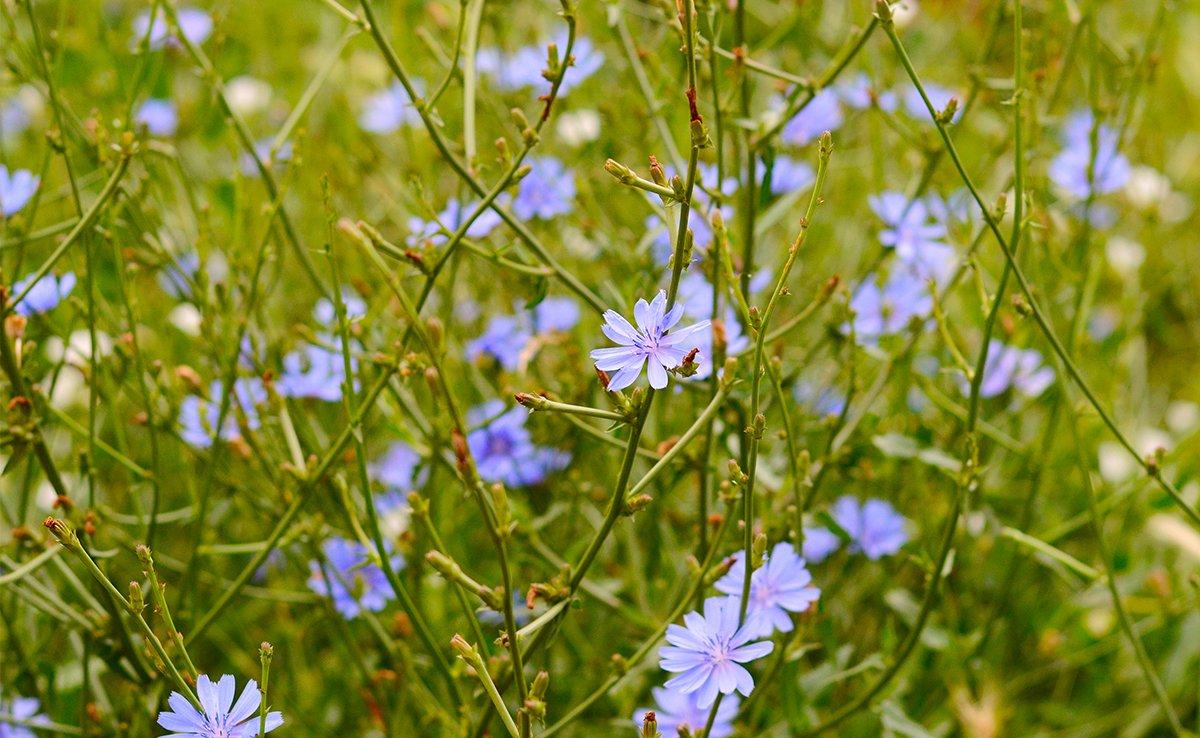What's Your Preferred Food Plot Seed Option for Wildlife?
This food plot seed option is a solid food source for deer and other wildlife. This perennial is attractive forage, especially during the early season. It's highly digestible and is a favorite among whitetails. It contains approximately 28 to 30 percent protein. It also has calcium, magnesium, potassium, sulfur and more nutrients that deer need.
I'm not a huge fan of seed blends, but if you are, chicory is one of the best candidates for doing that. Its requirements are similar to other seeds compatible with it. Plus, even though it's a very tall plant, it shouldn't completely shade out and smother the plants around it. Once mature, it can exceed 4 to 5 feet in height.
How to Plant
There are different chicory seed varieties out there. Choose one that is best-suited for your geographical location, climate and soil conditions. Location is key. Choose an area with plenty of sunlight.
Next, take a soil sample. Chicory prefers a soil pH of 5.6 to 5.8 and higher. Spray for weeds while you're waiting to hear back on the soil test. Once you have that, and there's been plenty of time for unwanted vegetation to die off, spread necessary fertilizer and lime to get the soil where it needs to be.
Work the ground up and prepare a good seed bed with a disk. Then, if drilling the seed, plant at a rate of 4 to 5 pounds per acre. If broadcasting, plant at a rate of 6 to 7 pounds per acre. Use either a cultipacker or simply run over it with vehicle or ATV tires to ensure good seed-to-soil contact. Seeds should be planted at a depth of about ¼-inch.
Where to Plant
Chicory is somewhat drought-resistant. This makes it safer to plant in locations that do not receive quite as much rain. It can be planted throughout most of the country. If deer densities are high, an exclusion fence might be necessary until the plant is at least 5 to 6 inches tall. While it is grazing-tolerant, it can still become over-browsed if deer hit it hard soon after germination.
When to Plant
Chicory is a fast-growing plant. It has wide planting windows because of that. It can be planted in either the spring or late summer/early fall. If you want a food source to attract, feed and hold deer during the summer months, plant in the spring. If you plant to hunt over it during the first part of bow season, I'd wait and plant in the late summer or early fall.
Don't Miss: 5 Food Plots for Procrastinators
Are you a hunter wanting to learn how to accomplish your goals? Check out our stories, videos and hard-hitting how-to's on food plots and land management.







